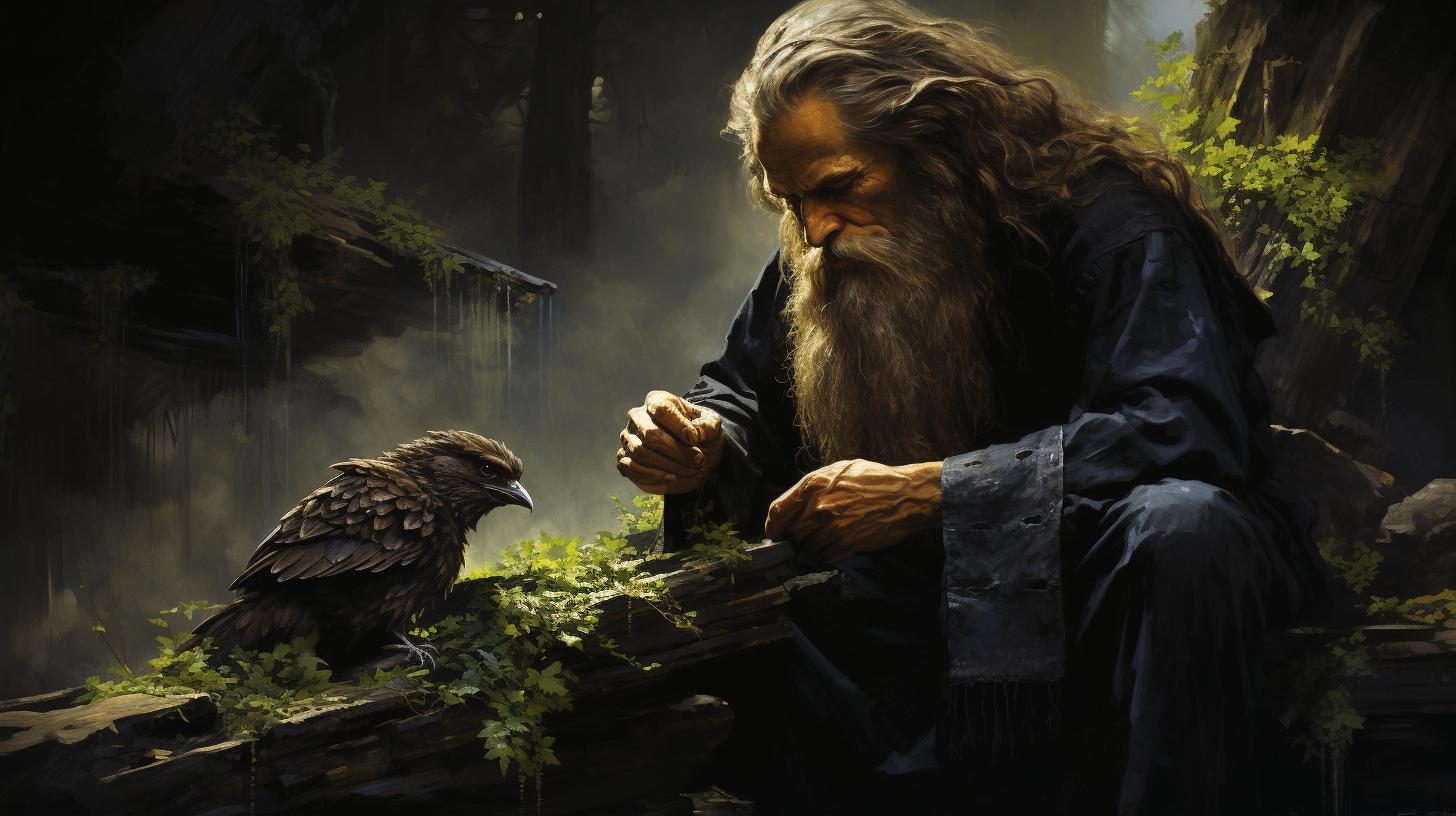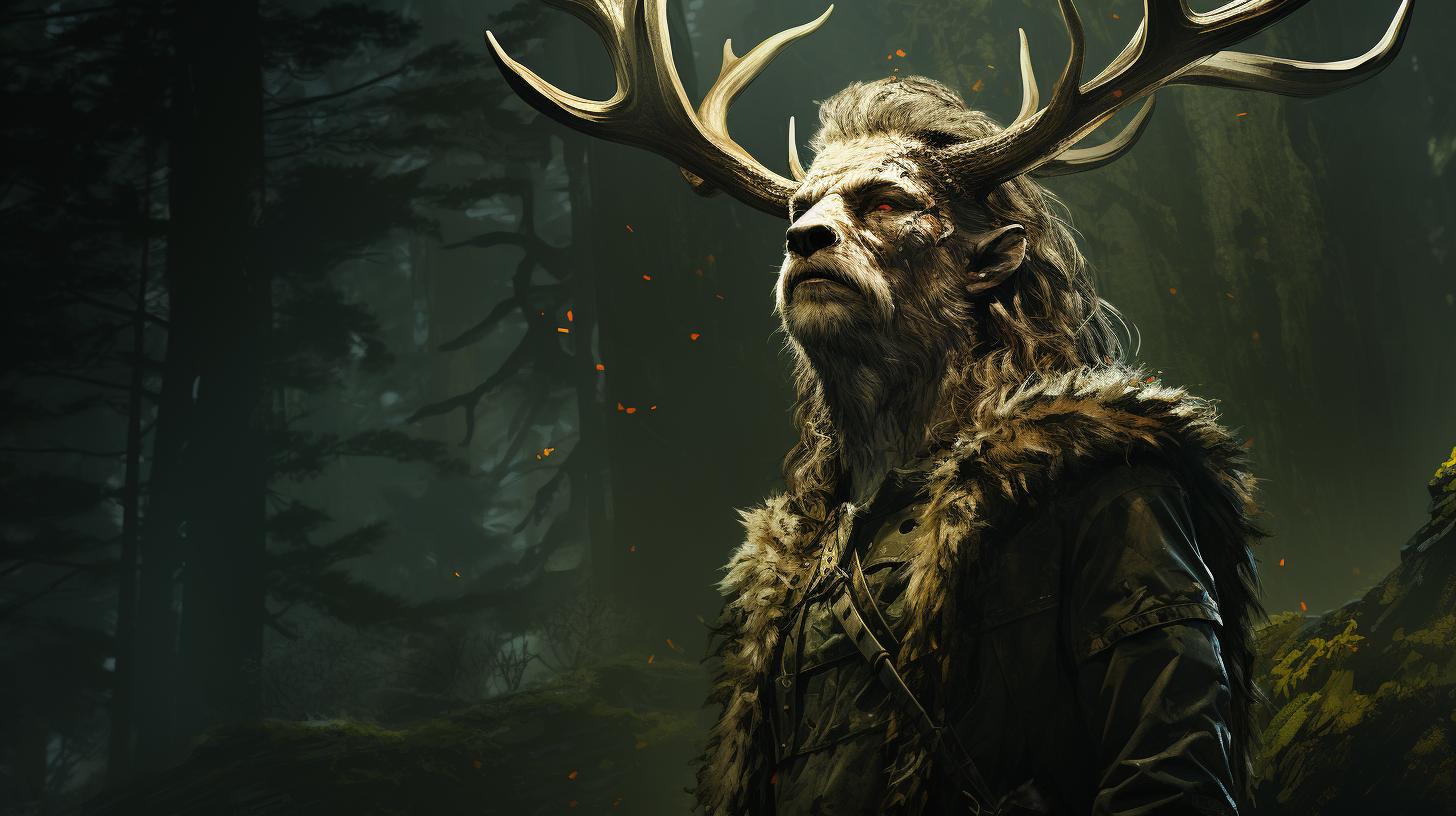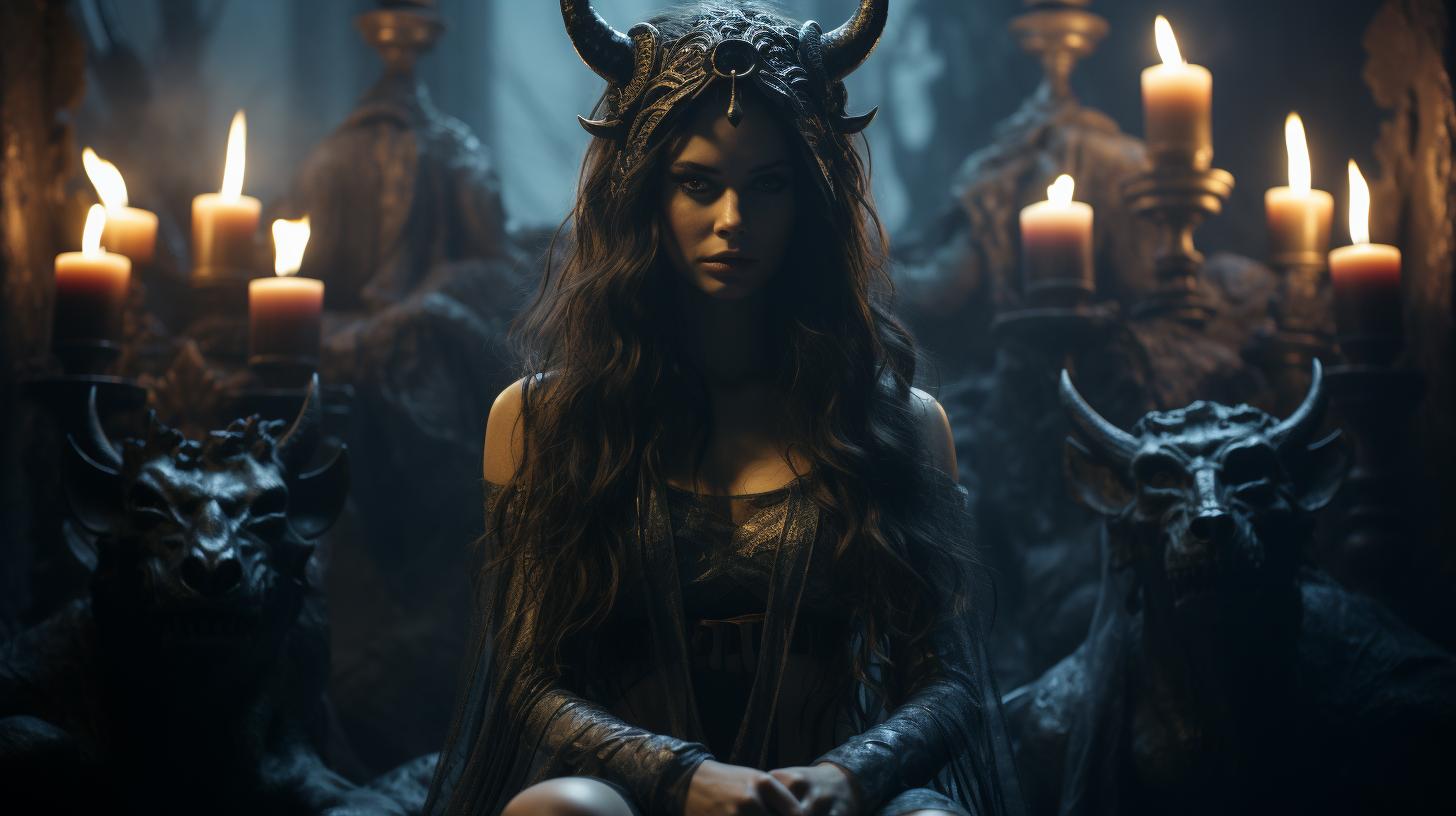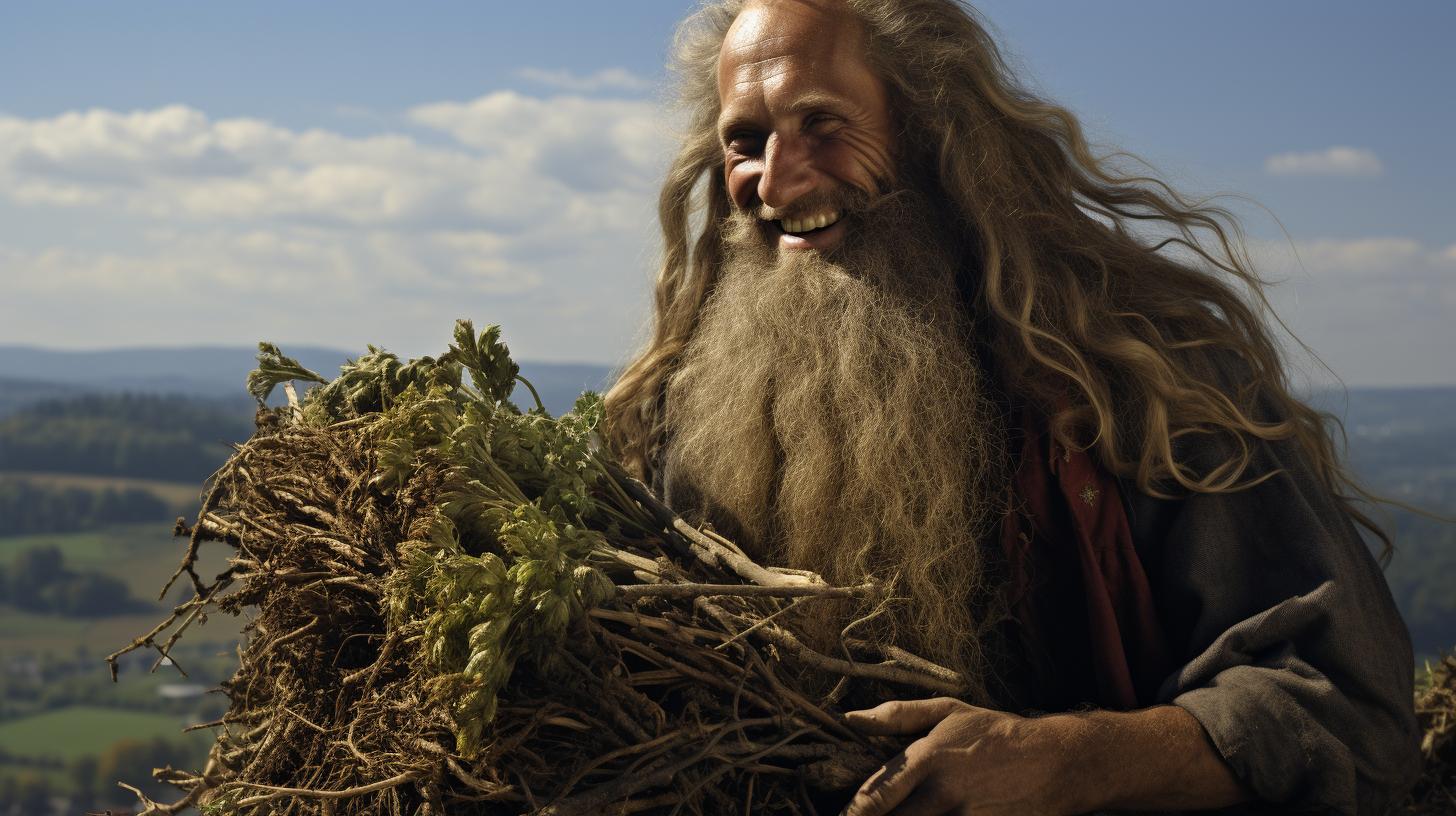Vainamoinen Myth: The Mythical Hero of Finnish Folklore
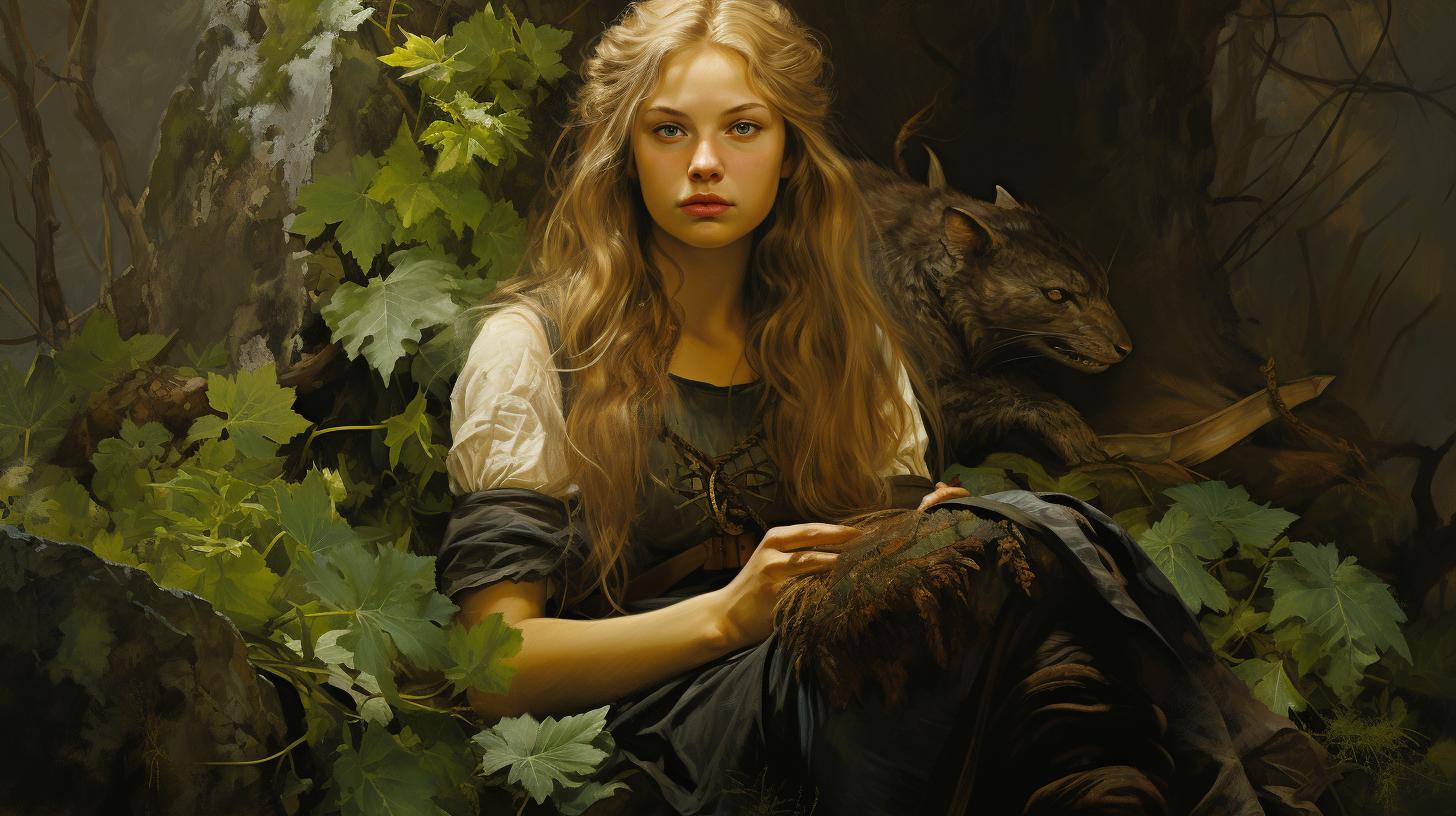
Väinämöinen myth is a fascinating part of Finnish folklore. As the mythical hero in Finnish culture, Väinämöinen plays a crucial role in the creation of the world, the adventures described in Kalevala, and the overall mythology of Finland.
From duels and musical inventions to quests for magical artifacts, Väinämöinen’s journey captivates with its wisdom and enchanting singing. The influence of Väinämöinen extends beyond Finnish mythology, inspiring various cultural references.
Exploring Finnish folklore reveals not only Väinämöinen’s significance but also other important figures and connections to mythologies worldwide.
The Mythical Hero: Väinämöinen in Finnish Folklore
Väinämöinen is a legendary hero who occupies a central role in Finnish folklore. His origins are traced back to the creation of the world and the mythological narrative of Finland. This section explores the fascinating origins of Väinämöinen and delves into his significant role in Finnish culture and mythology.
The Origins of Väinämöinen: Creation of the World
The story of Väinämöinen begins with the creation of the world in Finnish mythology. At the beginning, only the waters and the Sky existed, and from the Sky came Ilmatar, who gave birth to Väinämöinen after an event involving a duck’s eggs.
Väinämöinen’s birth marked the emergence of the Earth, the Sky, the Moon, the stars, and the Sun. His journey begins by swimming until he finds land, giving birth to the foundation of the world.
Väinämöinen’s Role in Finnish Culture and Mythology
Väinämöinen is revered as a wise sage and a masterful singer, earning him the title of the god of songs, chants, and poetry in Finnish mythology. He is also considered a cultural hero and plays a vital role in the national epic of Finland, the Kalevala.
His character represents the embodiment of ancient wisdom, order, and creativity in Finnish culture.
Adventures of Väinämöinen: Key Episodes in Kalevala
Väinämöinen’s journey in the Kalevala is filled with captivating adventures that showcase his prowess and resilience. These key episodes highlight his rivalry with Joukahainen, the invention of the kantele, and his quest for the magical Sampo.
Duel with Joukahainen: Väinämöinen’s Rivalry
Väinämöinen’s path crosses with Joukahainen, resulting in a fierce duel between the two. Using his wisdom and magical abilities, Väinämöinen emerges victorious, solidifying his role as a hero in Finnish folklore.
The Invention of Kantele: Väinämöinen’s Musical Legacy
Väinämöinen’s creative genius shines as he invents the kantele, an ancient Finnish musical instrument. This legacy of music and harmony becomes intertwined with his persona, representing the power of song and poetry in Finnish culture.
Theft of the Sampo: Väinämöinen’s Quest for Magic
Väinämöinen embarks on an epic quest to obtain the Sampo, a mystical object that brings prosperity and abundance. His daring adventure showcases his determination and resourcefulness, as he confronts adversaries and overcomes challenges to claim the Sampo for himself.
Väinämöinen’s Journey and Influence
Departure and Future Return: Väinämöinen’s Final Adventure
As Väinämöinen’s story unfolds, we witness his final adventure before his departure. Captivated by the changes in the world and feeling his powers wane, Väinämöinen decides to construct a copper boat.
This symbolizes his farewell, as he sets sail towards the west, singing his magical songs. His departure is accompanied by a promise to return if the need for his skills and powers arises again, leaving behind a sense of anticipation.
Väinämöinen in Popular Culture: Inspirations and References
Väinämöinen’s mythical character has left a lasting impact on various forms of popular culture. His influence can be seen in literature, music, and art worldwide. For instance, the iconic character of Gandalf in J.R.R. Tolkien’s ‘The Lord of the Rings’ is said to have been inspired by Väinämöinen. Finnish metal bands, including Ensiferum, Amorphis, and Korpiklaani, have also drawn inspiration from the legendary hero, crafting melodic compositions that pay homage to his mythical legacy.
Väinämöinen’s depiction in visual art often portrays him as an elderly figure with a white beard, representing the archetypal image of a wise wizard in fantasy literature. His character continues to captivate audiences, resonating with the timeless appeal of ancient folklore and the enduring power of mythological storytelling.
Väinämöinen Myth and its Cultural Significance
Within Finnish mythology, Väinämöinen holds a significant position as the central figure. His presence and actions shape the narrative of Finnish folklore and have a profound impact on the culture. Väinämöinen embodies the wisdom and power associated with old age, representing the collective knowledge and experience of the Finnish people.
Väinämöinen as the Central Figure in Finnish Mythology
Väinämöinen’s role as a semi-divine hero and the god of songs, chants, and poetry elevates his importance in Finnish mythology. Considered the embodiment of creativity and cultural heritage, he brings order and harmony to the world, balancing the forces of chaos.
Väinämöinen’s character represents the deep-rooted values and traditions of the Finnish people, emphasizing the importance of wisdom, knowledge, and artistic expression in their culture.
Väinämöinen’s Wisdom and Magical Singing
Väinämöinen’s wisdom is one of his defining attributes. He possesses unrivaled knowledge, accumulated through time and experience, which he imparts through his songs and magical singing. His voice carries immense power, capable of calming storms, healing the wounded, or mesmerizing listeners.
Väinämöinen’s songs reflect the profound connection between language, music, and the preservation of cultural heritage. The melodies he creates are captivating and carry deep emotional resonance, often conveying moral lessons or historical narratives.
Furthermore, Väinämöinen’s singing serves as a source of inspiration for other characters and even influences events within Kalevala. His melodies ignite the spirits of those who hear them, providing comfort and guidance in times of hardship.
Väinämöinen’s role as the master of songs reinforces the importance of oral tradition and storytelling in Finnish culture, fostering a sense of collective identity and community.
5. Exploring Finnish Folklore: Beyond Väinämöinen
Within Finnish folklore, Väinämöinen is indeed a prominent figure.
However, there are other important characters in the epic poem Kalevala that contribute to the rich tapestry of Finnish mythology. Let’s delve into these noteworthy individuals and deities.
Other Important Figures in Kalevala: Lemminkäinen and More
One such character is Lemminkäinen, a young and skilled warrior who embarks on daring quests and encounters various challenges.
Known for his charm and resourcefulness, Lemminkäinen adds depth to the narrative, showcasing bravery and cleverness.
Gods and Goddesses in Finnish Mythology: Ukko, Tapio, Mielikki
In addition to the human heroes, Finnish mythology encompasses a pantheon of gods and goddesses. Ukko, the god of thunder and weather, holds immense power over the natural elements. Tapio and Mielikki reign supreme as the god and goddess of the forest, embodying the interconnectedness between nature and humanity.
- Ukko: The mighty god of thunder and weather.
- Tapio: The god of the forest, protectively guarding its secrets.
- Mielikki: The goddess of the forest, who ensures its prosperity and fertility.
These divine beings play integral roles in Finnish folklore, granting blessings and influencing various aspects of life within the mythos.
Connections to Other Mythologies: Väinämöinen in a Global Context
As a prominent figure in Finnish folklore, Väinämöinen’s mythological significance extends beyond Finland. There are striking similarities between Väinämöinen and characters from other mythologies, showcasing shared cultural elements and universal themes.
Two notable connections are the similarities with Estonian mythology’s Vanemuine and the parallels between Väinämöinen and Odin, a central figure in Nordic mythology.
Similarities with Estonian Mythology: Vanemuine
Väinämöinen bears resemblance to Vanemuine, a central character in Estonian mythology. Both are wise, ancient heroes known for their musical abilities and poetic nature. They embody similar traits, such as their prowess in singing and their role as culture bearers.
Their stories reflect the significance of music and poetry in Baltic and Nordic cultures, emphasizing the universal power of artistic expression.
Väinämöinen and Odin: Nordic Mythological Connections
Väinämöinen shares intriguing similarities with Odin, the prominent god in Norse mythology. Both are wise, ancient figures associated with poetry, magic, and musical instruments. Väinämöinen’s invention of the kantele mirrors Odin’s creation of the harp-like instrument, Gungnir.
These parallels highlight the cultural exchange and interconnectedness of mythologies in the Baltic and Nordic regions.
.

